Are there free alternatives to Photoshop that can perform professional photo editing and digital drawing at the same high level?
These days, Photoshop is a leader among photo editing software and is used by practically all professional photographers, designers, and web-developers.
Still, there are some free Photoshop Alternative programs with almost the same features and possibilities for photo editing.
Today we would like to review 5 programs that have similar Photoshop
functions.
Why Look for an Alternative to Photoshop?
Photoshop was created by Adobe more than 20 years ago. It was one of the first programs that provided deep digital picture editing, digital drawing, designing projects, etc.
Even though it has plenty of advantages, there are still a few weak points. This software is difficult for beginners. However, there are a lot of video tutorials that can help you master it quicker. Also, it is quite expensive.
To use this software on a regular basis, you will need to have a subscription and pay min $9.99 per month.
1. GIMP
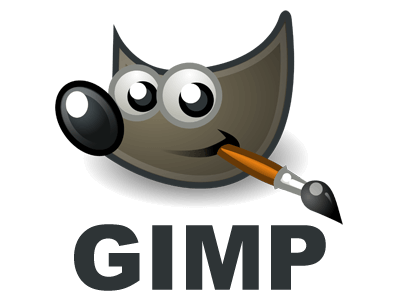 Pros:
Pros:
- Brushes, gradients, effects, filters
- Integrated PSD format support
- Batch image editing
- A large number of plug-ins
- Mobile version
Cons:
- The interface is quite difficult
- Specific control mechanism
GIMP stands for GNU Image Manipulation Program and is the best Photoshop alternative in 2019. This open-source photo editor debuted on Unix platforms and now is available for all popular desktop operating systems.
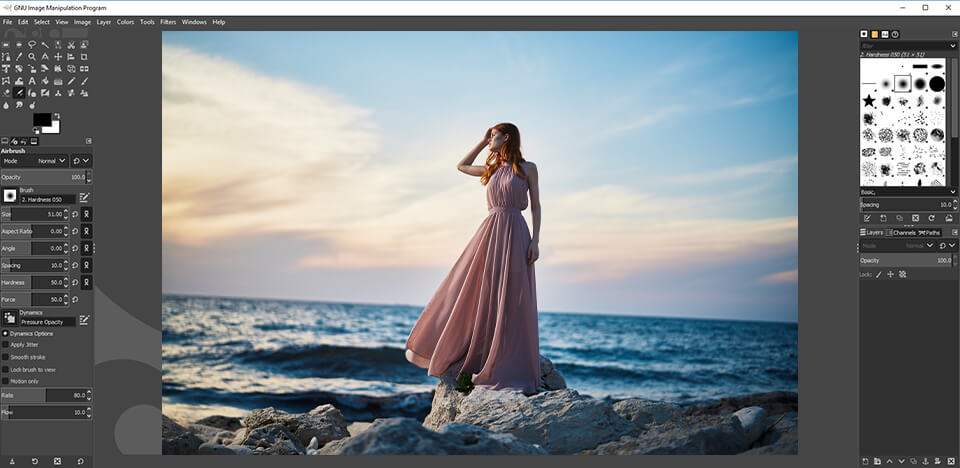 GIMP offers a large choice of image editing and designing tools. You can easily find all usual tools including brushes, colour correction settings, as well as tools for copying, selecting and photo editing.
GIMP offers a large choice of image editing and designing tools. You can easily find all usual tools including brushes, colour correction settings, as well as tools for copying, selecting and photo editing.
It is suitable for raster and vector graphics. This means that artists can draw there and designers may create new logos and web-designs.
As for work with digital photos, GIMP does a great job but in order to master it on a professional level, you will have to spend a lot of time and efforts (few tutorials on YouTube) and get used to a specific interface.
2. PhotoScape
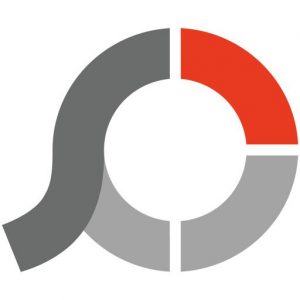 Pros:
Pros:
- Offers batch image edit
- Works with layers
- Provides great tools for color correction
Cons:
- No proper optimization with OS Windows 10
- Accesses various websites using Internet Explorer
PhotoScape is a great free Photoshop alternative. This picture editor will become a great helper for beginners and Insta bloggers.
Image viewing or management is done with the help of the “Viewer” tool. Effects, filters, and blurring can be added in “Editor”.
You can also crop, paste, and zoom in pictures. There are a regular editor and a batch one. Also, this software has tools for screen capture and GIF creation.
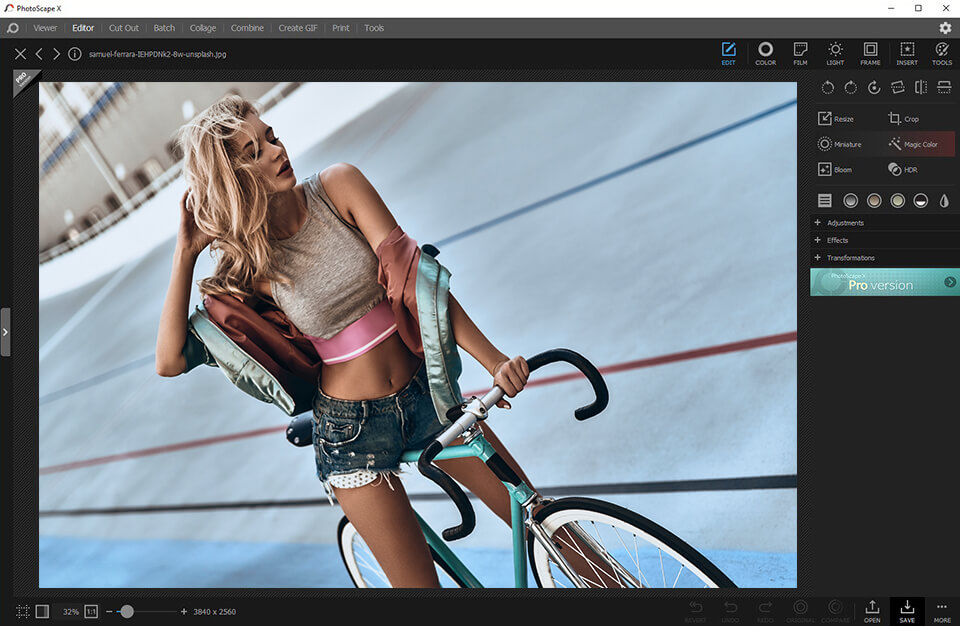 It is clear that this alternative to Photoshop is not suitable for professional photographers and designers at all.
It is clear that this alternative to Photoshop is not suitable for professional photographers and designers at all.
It is actively used by selfie photographers, who often take pictures, create collages for Instagram and Twitter, add creative filters, etc. As a result, you get a free image editor that is practically the same as the paid ones!
3. Pixlr
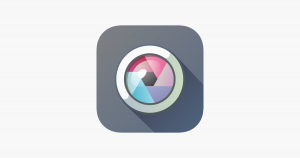 Pros:
Pros:
- Convenient toolbar
- User-friendly interface
- Customizable colour scheme
- Mobile version
Cons:
- Requires stable Internet connection
Pixlr is positioned as “the most popular online photo editor in the world” and probably because it’s absolutely free. At the same time, this service offers 600 effects, overlay options, and frames.
With the help of Pixlr, you can perform all common photo editing operations as cropping and resizing, red-eye effect removing and teeth whitening. This free Photoshop alternative has almost the same interface design as the Adobe software.
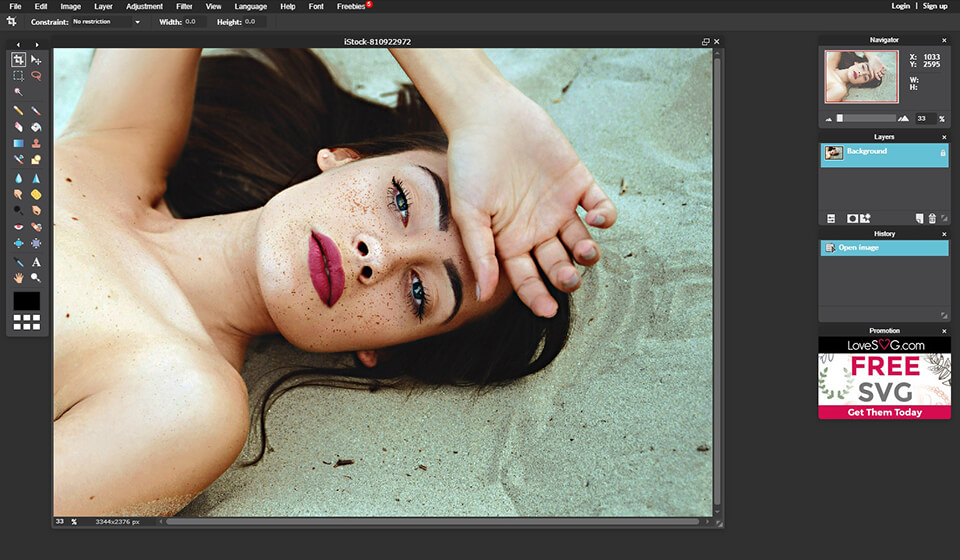 There is a convenient sidebar with tools, a central area for photo editing and a top menu with all available image improvement options.
There is a convenient sidebar with tools, a central area for photo editing and a top menu with all available image improvement options.
The program features allow you to adjust brightness, contrast, transparency, and the size of a picture. Developers created not only a desktop version, which is a decent sample of Photoshop alternatives but programs for Android and iOS mobile devices.
4. digiKam
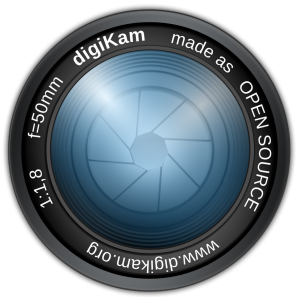 Pros:
Pros:
- Well-designed organizer
- Offers high-speed import, export, photo libraries
- Performs picture editing and color correction
- Open-source
- Linux-compatibility
Cons:
- Lacks capabilities for professional picture editing
This is a robust image manager, organizer, and editor if you want to carry out simple picture editing and colour correction. This free Photoshop alternative was originally developed for Linux but it also supports Windows and Mac.
The best functions in this software are related to photo managing and organizing. You can use different ways to import photos, organize them into albums, view and search for them by time, location, tags, and people.
DigiKam is an open-source picture editor where you can easily try out various plug-ins for professional image editing. You can customize original effects and filters, use brushes and many other tools.
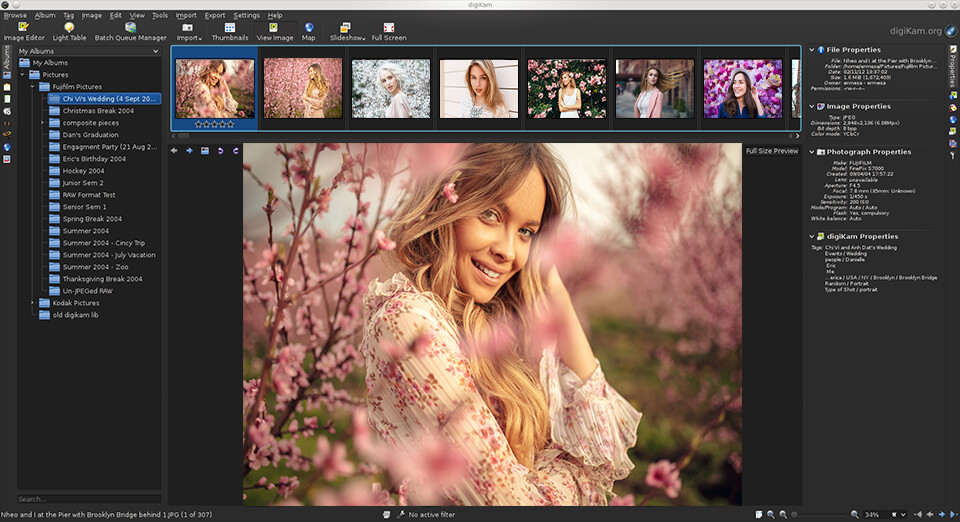 However, this type of Photoshop alternatives can’t fully compete with Adobe Photoshop. A big minus here is that the majority of tools that this software offers operates unsatisfactorily and provides few additional settings.
However, this type of Photoshop alternatives can’t fully compete with Adobe Photoshop. A big minus here is that the majority of tools that this software offers operates unsatisfactorily and provides few additional settings.
Besides, this photo editor is not suitable for weak computers, and it may work slowly.
5. Photo Pos Pro
 Pros:
Pros:
- Works fast on weak computers
- Brushes
Cons:
- Has a disorganized interface
- Doesn’t have batch photo edit
If you work on Windows and don’t need so many tools as GIMP offers, then Photo Pos Pro can become your ideal photo editor.
It was created with a focus on photo colour correction and does an excellent job with typical tasks such as adjustment of contrast, lighting, and saturation. However, this variant of free programs like Photoshop is also suitable for more difficult portrait editing operations.
This program has a very user-friendly interface and a detailed guide which allows beginners to master the image editor faster. The user interface looks somewhat irregular and outdated. Combined with a wide range of functions it can make the learning curve a bit steep.
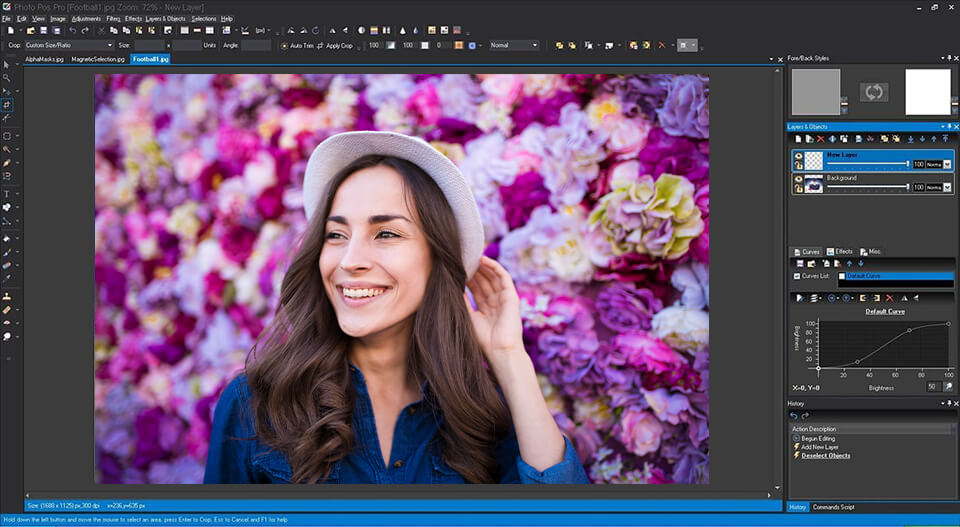 However, once you go beyond that, everything works quite well but the range of image editing options can take some time to understand everything.
However, once you go beyond that, everything works quite well but the range of image editing options can take some time to understand everything.
There is an opportunity to display and hide different toolbars and palettes which give more control over the interface look.

No Responses